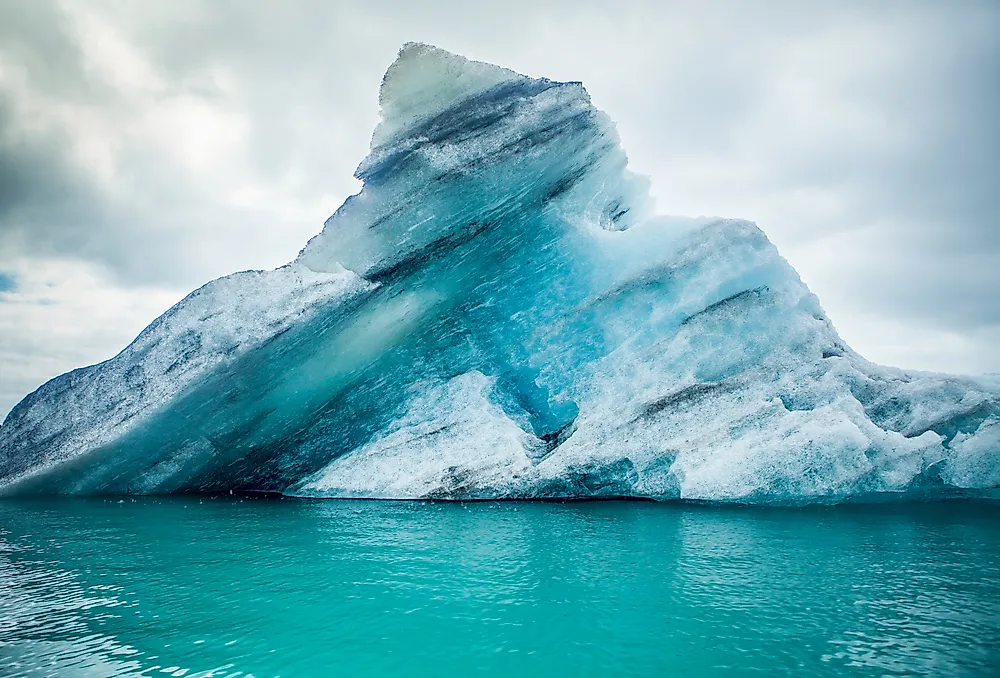Are Icebergs Made of Fresh Water or Salt Water?

Icebergs are the largest pieces of freshwater ice floating in the open waters of oceans and seas. They are a synonymous phenomenon of the Polar Regions where temperatures are very frigid. Interestingly, only 10% of an iceberg is usually visible while 90% is submerged in water. The height of icebergs vary between 3.3 to 250 feet above sea level and temperatures around them measure as low as negative 20 degrees Celsius. Antarctica is home to the largest icebergs on earth with the highest ever measured tabular iceberg having a surface area of 12,000 square miles and measuring 555 feet, which is the average height of the Washington Tower.
Formation of Icebergs
Icebergs are formed through two distinctive processes which determine their composition. Although the formation processes differ, icebergs usually contain fresh water.
Freezing Sea-water
In exceptionally low temperatures, seawater begins to freeze gradually. As it freezes, it forms a central point from where it keeps on developing towards the outside. The slow process leads to the formation of a lattice that thrusts out all the salt to the edges of the freezing ice mass and eventually releases all the salt back to the sea waters. This process takes years to form since it is slow and gradual. Icebergs formed contain fresh water as all the salt is eliminated through the lattice.
Calving of Ice Glaciers
Places such as Greenland and Antarctica experience extremely low temperatures throughout the year. As a result, they are usually covered in permafrost in the form of glaciers and ice shelves. Due to the accumulation of snow, parts break away from the edges and drift into the ocean forming icebergs. Since all the snow and ice accumulating to form the ice shelves is frozen fresh water, icebergs formed through this process are fresh water.
Dangers Posed By Icebergs
Scientists view the study of icebergs as an important phenomenon for maritime vessels. Since most of the mass of an iceberg is submerged in water, it poses a challenge to marine vessels, especially at night when the vessel crew is prone to undermining the size of an iceberg by looking at its tip. Since the sinking of the Titanic in 1912, the US together with other twelve countries formed the International Ice Patrol Unit that uses airplanes and radars to track icebergs floating along major shipping lanes. The unit warns ships traversing the North Atlantic and Antarctica waters of the presence of icebergs lying in their route.
Effect of Climate Change on Icebergs
Icebergs also play a crucial role in supporting marine life in the Polar Regions. Those lying in the continental shelves act as important hunting and recreation ground for polar bears. However, global warming and the resultant climatic changes lead to the melting of the icebergs forcing bears to swim further into the ocean in search of hunting grounds, which results to drowning and reduction in their number. Moreover, fresh water from the melting icebergs does not mix with the saline ocean waters resulting in elevated sea levels.











